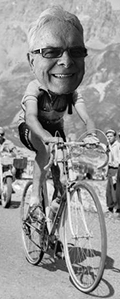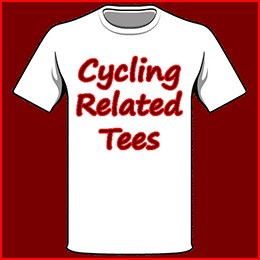Understanding other cultures
 Wed, April 16, 2008
Wed, April 16, 2008 
Probably one of the main causes of problems between the nations of the world is a failure to understand the difference in each other’s beliefs, customs, and general way of life.
When I wrote an article last September called “Womankind,” linking to a blog from Denmark called “Copenhagen Girls on Bikes,” I received a lot of criticism by way of comments.
In fact, the criticism is ongoing both for me and the Copenhagen blog.
Most of the critics are from America and label the site as sexist, voyeuristic, and demeaning to women. I have looked for, and not found complaints from Danish women. One would think if the women pictured on the Girls on Bikes blog found it offensive, they would at least protest by way of a comment or two.
On the other side of the coin, Mikael Colville-Andersen, one of the people responsible for Copenhagen Girls, in his effort to spread bicycle culture is often critical of American cyclists.
Known to speak out against the wearing of helmets and Lycra, he posted a comment on my recent post that highlighted a “California Cycling League Safety Video.”
This was his comment”
“That video is the work of the 'Vehics'. The Vehicular Cyclists are the Flat Earth Society of the cycling world. Strange, outdated beliefs with little science to back them up. I thought it was satire when I first saw it.”
I feel obliged to respond, and my reply is too long for a simple counter comment. Mikael, you are living in a country that has a definite bicycle culture; cyclists in America are riding their bikes, and doing the best they can, in a definite automobile culture. This is a left turn signal in Copenhagen. (Picture left.) In the US, it is entirely possible that the cyclist is not even seen, (We are invisible.) let alone such a nonchalant hand gesture.
This is a left turn signal in Copenhagen. (Picture left.) In the US, it is entirely possible that the cyclist is not even seen, (We are invisible.) let alone such a nonchalant hand gesture.
The cyclist must place themself in the center of the lane, forcing drivers to slow then give a clear signal and move over when it is safe to do so.
On my ride last weekend, I did this maneuver on a three-lane highway, taking one lane at a time, to get to the fourth left turn lane.
I doubt there are many such roads in Denmark, and if there are, I am sure there is special provision made for cyclists to turn safely.
I wore Lycra and my helmet. Bright colored Lycra because in the interest of my own safety, I want to be seen. A helmet because it is my choice; I view it, as a very last line of protection should all else fail. In addition, it keeps my head cool in the very hot climate here. The temperature in South Carolina where I live was 85 F. (29.4 C.) on Saturday, to ride in street clothes would not have been practical.
The picture at the top of this piece is of a woman riding at night in Copenhagen. Even though she is dressed entirely in black, she is safe and obviously feels she is safe. This would not be the case in any large American city, even on a bike equipped with good lighting.
Mikael, I admire what you are doing; spreading the word of a bicycle culture. However, I doubt your message is reaching mainstream America, and those it is reaching think your site is sexist, voyeuristic, etc. etc. (Probably in part because of mainstream America’s puritan culture.)
My advice would be, not to alienate the few fans you have in the US, namely the bicycle enthusiasts. I would love to see more people riding bikes to work than driving cars, but realistically this is not going to happen anytime soon in the US.
People ride bikes in Demark because it is the normal thing to do. The country is tiny compared to the US; distances traveled are much shorter. Riding a bicycle in America is not considered normal by the majority of the population, and the people riding bicycles in the USA are mostly enthusiasts, doing so for the love of riding a bicycle.
Let us all try to understand the differences in our separate cultures, and realize what works and is acceptable in one country, will not necessarily be the same in the other. I suspect the Danes do not view Copenhagen Girls on Bikes as sexist.
In the Scandinavian countries, there is more equality and tolerance for differences, not just between the sexes, but in all walks of life. Whereas, in the US there is a constant ongoing battle of the sexes, as well as intolerance for anyone seen as a little different and outside the mainstream.
And so Mikael, try to understand what it is like to be a bike rider in a car culture country. Vehicular cycling, far from being some weird science, is for the most part following the rules of the road. Ease up on the criticism; we are doing the best we can under very difficult conditions.
 Dave Moulton | Comments Off |
Dave Moulton | Comments Off | 

















